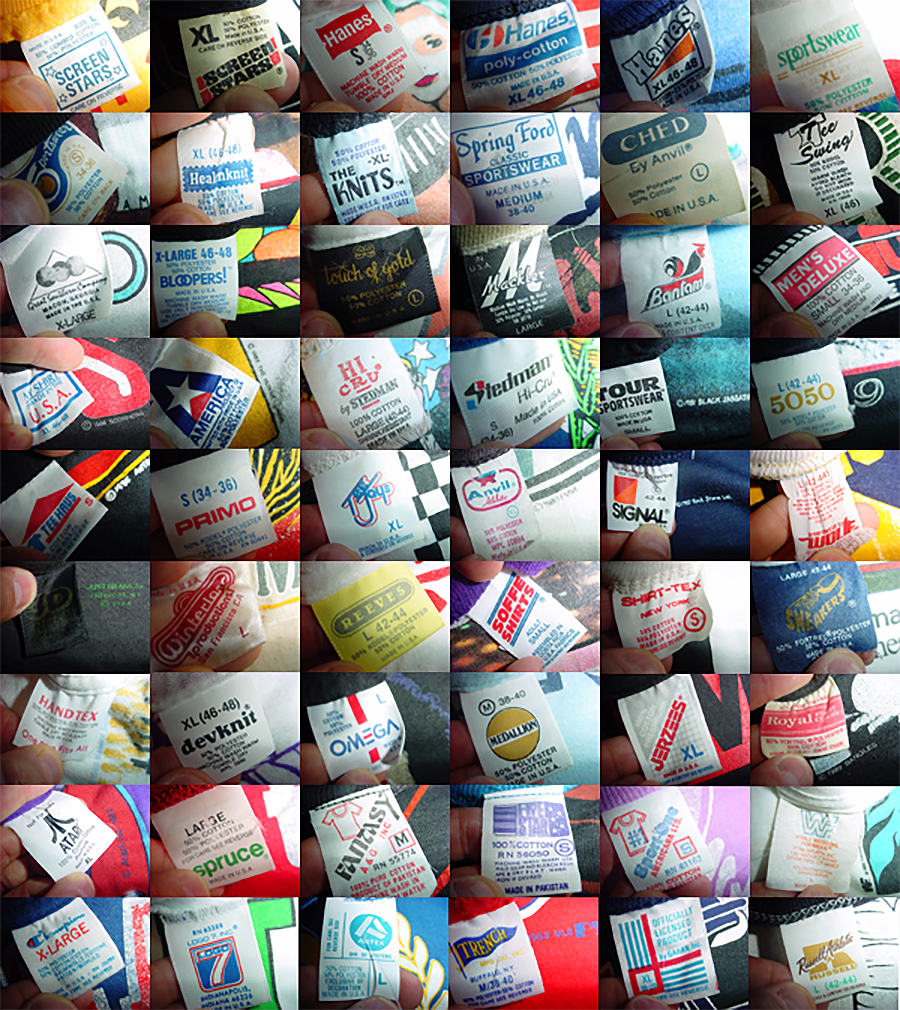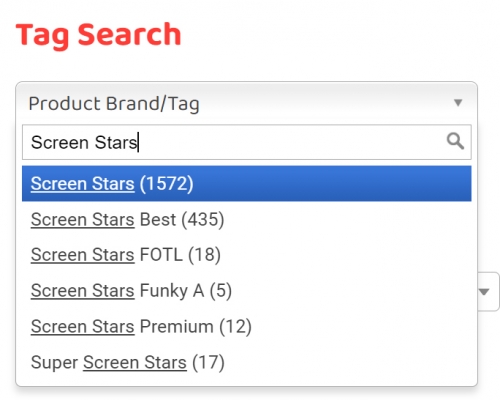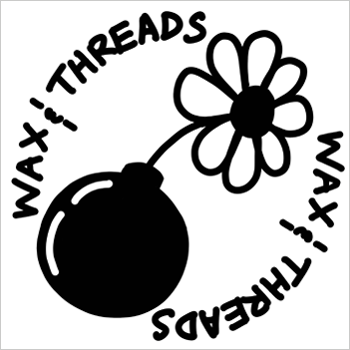As outlined in our two previous vintage t-shirts guides, one of the ways to determine if a shirt is truly vintage is by checking its label. Since these lines are no longer in production or have updated their branding, inspecting a vintage shirt tag can tell you a lot about the authenticity of a t-shirt and the era in which it was produced. You can also factor in a shirt’s blend of fabrics; in terms of vintage brands, a 50/50 polyester-cotton blend was far more common in the 1980s than the 100% cotton trend prior and beyond the decade.
1970s
Tees from the 70s will more often be 100% cotton. It wasn’t until the late 1970s that 50/50 tees became the norm. Hanes, Healthknit, Champion, Sportswear, Russell, and FOTL were among the mainstream brands with recognizable tags. But it was also an era of plain, generic tags. If a 1970s tag features branding it was more often a simple design and one color. Sometimes tags didn’t have a link to a specific company aside from an RN number.
Some brands were produced in Pakistan, like Fantasy and these tags will often be bootleg prints and the tag will now appear blank or frayed as a result of wear, wash, and age.

1980s
Many popular brands emerged in the 1980s. Some focused on producing a variety of colors, while others specialized in making different styles of shirts, including ringers and jerseys. Brands such as Screen Stars, Hanes, Anvil, and Sportswear were some of the most widely manufactured t-shirts. Each of these vintage brands went through different phases of label designs which can easily be linked to a particular period. The branding became more obvious and the tags often had two-color designs.
Some brands began following Champion and manufactured tees for sports-related purposes. Labels such as Logo 7, Artex, and Trench made many of the best t-shirts, jerseys, and sweatshirts featuring popular athletic names, teams, and styles in the 1980s. Specialty brands like 3D Emblem also rose to huge popularity in the 1980s. We also begin to see music-specific tags that originated in the 1970s, gaining momentum, like Winterland.

1990s
While many new big-name players emerged in the 1990s, just as many faded away. Some companies merged together – for example, Screen Stars would slowly morph into “Best” by Fruit of the Loom. Music and concert merchandising became an even bigger business and had dedicated licensing brands like Brockum, Giant, Wild Oats, Gem, and even Liquid Blue. Some of these companies didn’t actually manufacture t-shirts so they had their labels sewn into other blanks produced by FOTL and Hanes. In this era, there was a trend back toward 100% cotton. Woven tags started to become even more common.

How do I know if a t-shirt tag is vintage?
Just because you don’t see a brand listed here, that doesn’t mean the item in question isn’t vintage. There are just too many companies from these decades to display them all. We have streamlined this guide to present some of the most commonly occurring brands in their various forms.
You can, however, use our vintage t-shirt and brand archive to search through our tag database. Just type the name of the tag you’re looking for under “Tag Search.” (If you’re on mobile visit that page and scroll down to locate the “tag search” widget!

You might also be interested to learn how to authenticate using the tag and our archive of fake vintage t-shirt tags.





 Heat Check rounds up the highest-selli
Heat Check rounds up the highest-selli
 Welcome to Grails Gone Wild. Once a week, we r
Welcome to Grails Gone Wild. Once a week, we r
